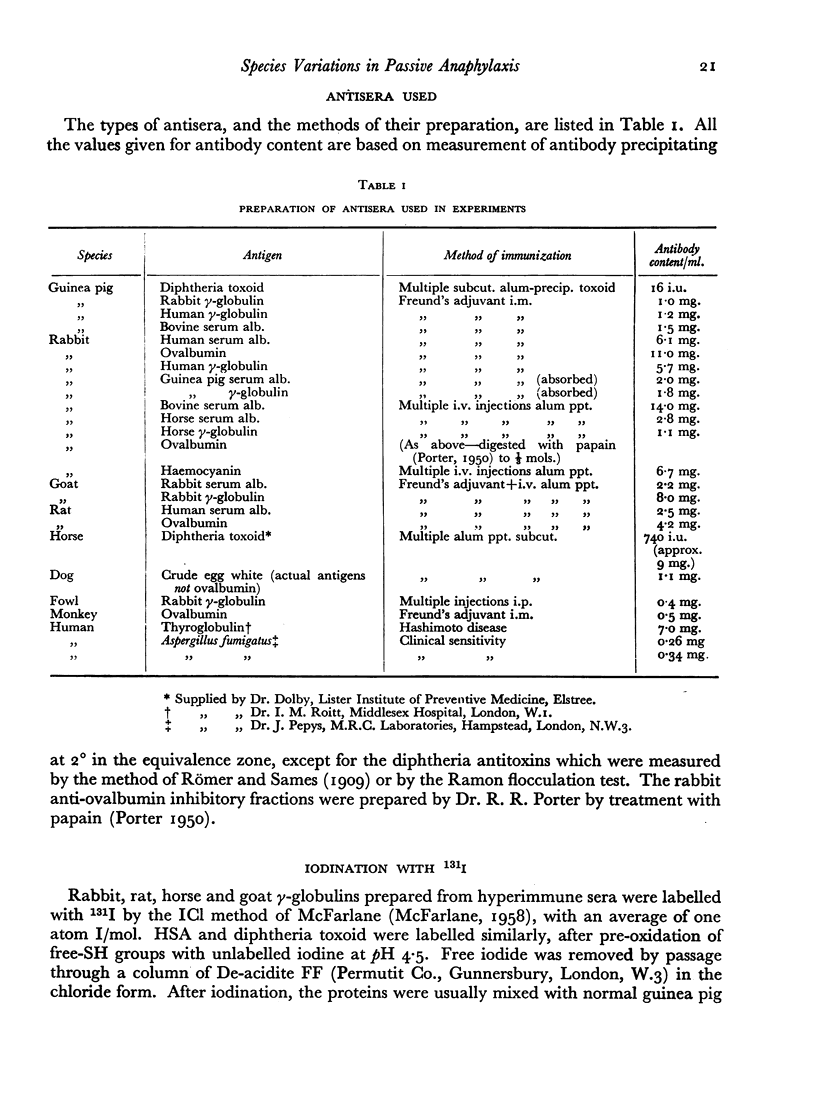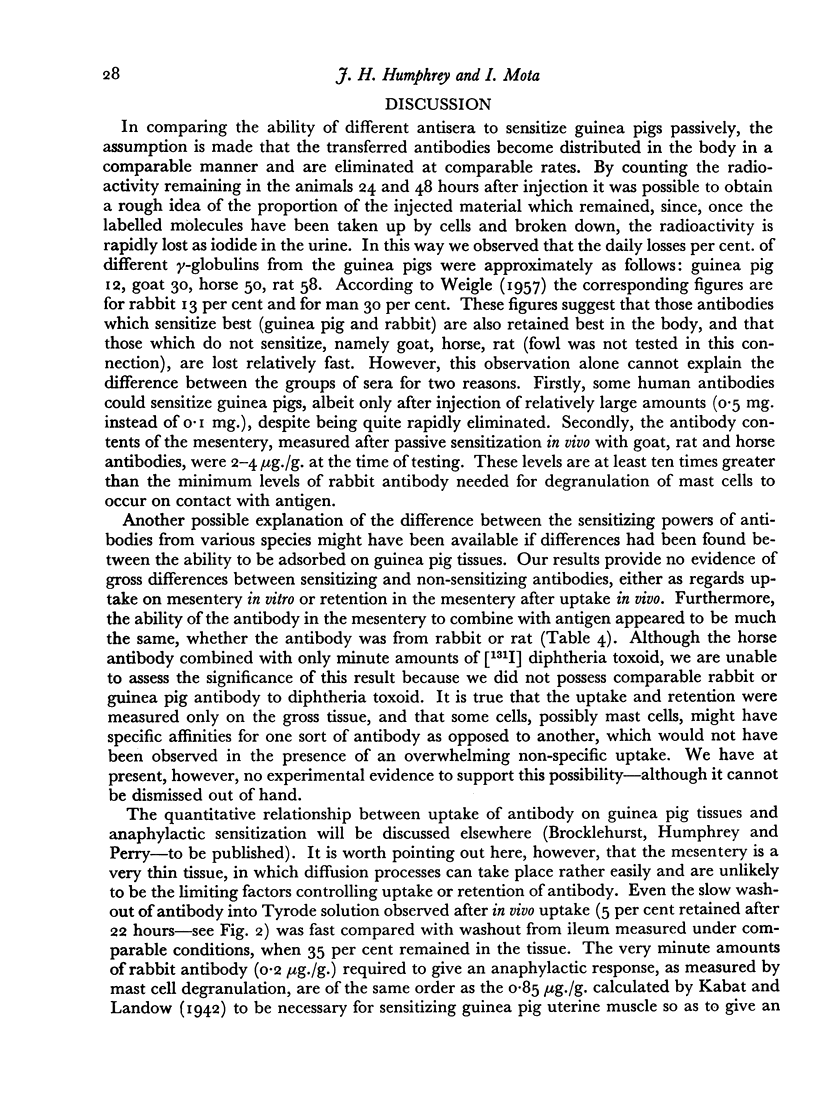Abstract
Using the criteria of generalized anaphylaxis, the Schultz-Dale test, and mast cell degranulation occurring on contact with antigen in vitro, a study has been made of the ability of antisera, prepared in various species, to sensitize guinea pig tissues passively. Whereas small amounts of guinea pig and rabbit antibodies and rather larger amounts of monkey, dog and human antibodies were effective, antibodies from goat, horse, rat, fowl and a human auto-immune thyroid antiserum were ineffective. These results are in general agreement with those in the literature.
Using antibodies labelled with 131I, no gross differences were found between those which sensitized and those which did not, either in respect of uptake on guinea pig mesentery in vitro, or retention in the tissue after uptake in vivo. By means of antigen labelled with 131I it was also shown that the antibody adsorbed on guinea pig mesentery could combine equally well with antigen, whether the antibody came from rabbit (sensitizing) or rat (non-sensitizing). These experiments also indicated that the amount of adsorbed antibody necessary for sensitization is very small.
Reversed passive anaphylaxis was studied with a variety of different antigen-antibody systems, using the criteria listed above. It occurred when, but only when, the antigen was a γ-globulin, and when both antigen and antibody globulins came from species whose antibodies were able to sensitize guinea pigs for direct passive anaphylaxis.
It is concluded that the explanation of the differences between antibodies or antigens which sensitize guinea pigs passively, and those which do not, is to be found in the nature of the antigen-antibody combination as well as in the manner of `fixation' on the tissues. The possible importance of ability to activate guinea pig complement is discussed.
Full text
PDF











Selected References
These references are in PubMed. This may not be the complete list of references from this article.
- BECKER E. L. Concerning the mechanism of complement action. II. The nature of the first component of guinea pig complement. J Immunol. 1956 Dec;77(6):469–478. [PubMed] [Google Scholar]
- GEDIN H. I., PORATH J. Studies of zone electrophoresis in vertical columns. II. Zone electrophoresis of serum proteins. Biochim Biophys Acta. 1957 Oct;26(1):159–169. doi: 10.1016/0006-3002(57)90067-7. [DOI] [PubMed] [Google Scholar]
- KUHNS W. J., PAPPENHEIMER A. M., Jr Immunochemical studies of antitoxin produced in normal and allergic individuals hyperimmunized with diphtheria toxoid. II. A comparison between the immunological properties of precipitating and non-precipitating (skin-sensitizing) antitoxins. J Exp Med. 1952 Apr;95(4):375–392. doi: 10.1084/jem.95.4.375. [DOI] [PMC free article] [PubMed] [Google Scholar]
- MONGAR J. L., SCHILD H. O. Effect of temperature on the anaphylactic reaction. J Physiol. 1957 Feb 15;135(2):320–338. doi: 10.1113/jphysiol.1957.sp005713. [DOI] [PMC free article] [PubMed] [Google Scholar]
- PORTER R. R. The formation of a specific inhibitor by hydrolysis of rabbit antiovalbumin. Biochem J. 1950 Apr;46(4):479–484. doi: 10.1042/bj0460479. [DOI] [PMC free article] [PubMed] [Google Scholar]
- WEIGLE W. O. Elimination of I131 labelled homologous and heterologous serum proteins from blood of various species. Proc Soc Exp Biol Med. 1957 Feb;94(2):306–309. doi: 10.3181/00379727-94-22930. [DOI] [PubMed] [Google Scholar]


